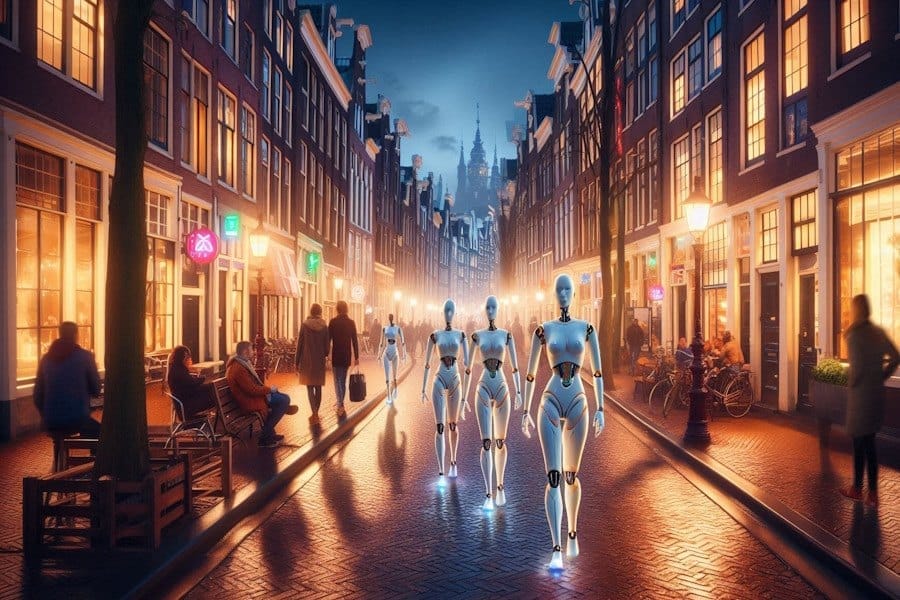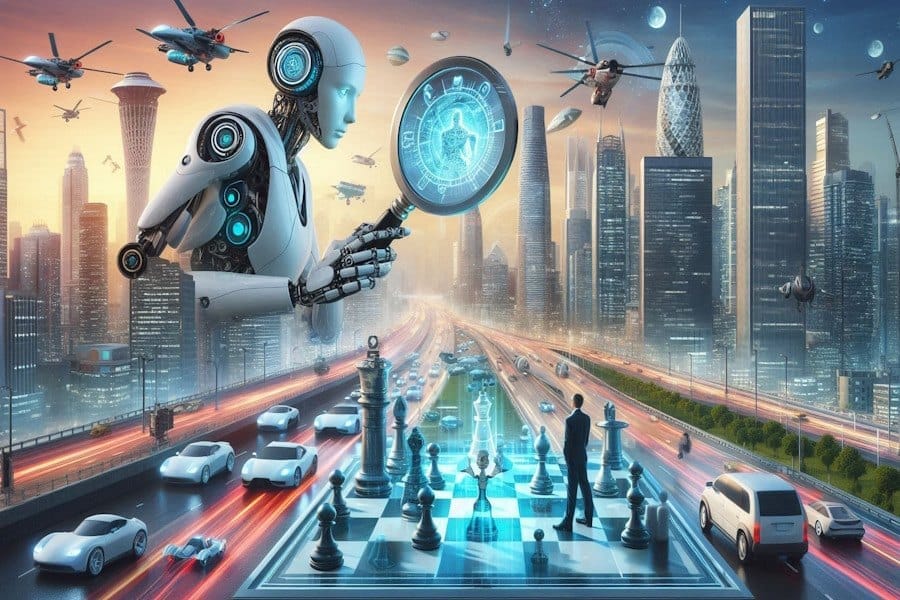The Transformation of the Oldest Profession
AI, Robotics, and the Future of the Sex Industry

Publish Date: Last Updated: 31st October 2025
Author: nick smith - With the help of CHATGPT
The sex industry, often referred to as the world's oldest profession, has been a complex and multifaceted part of human society for millennia. Regardless of one's stance on its morality, it undeniably plays a significant role in many economies, particularly in developing countries where it can serve as a crucial source of income for families. As we stand on the cusp of unprecedented technological advancement, the advent of artificial intelligence (AI) and robotics is poised to redefine this age-old industry fundamentally.
Recent developments in AI image and video generation have reached a level where creating ultra-realistic media featuring both men and women is possible without human models. Companies can now produce content that caters to a wide array of preferences, with AI entities capable of learning and adapting to individual consumer desires. This shift not only reduces the reliance on human performers but also raises questions about authenticity, consent, and the nature of human connection in digital experiences.
In the realm of robotics, significant strides are being made in developing human-like androids, particularly in countries like Japan. These androids are designed to mimic human appearance and behavior, capable of performing tasks without fatigue or complaint (unless programmed otherwise). They can learn from interactions, offering personalized experiences that were once the exclusive domain of human relationships. According to a report by Allied Market Research, the global market for sex robots was valued at approximately $165 million in 2019 and is projected to reach $525 million by 2025, indicating rapid growth driven by technological advancements.

Have Humanoid Robots Gone Too Far?
YouTube Channel: Interesting Engineering

Women Of The 1950's Super Panavision 70 | AI Retro Future World - AI Short Film
YouTube Channel: Ai Retro Movies

Asking AI To Create The Most Handsome Man For Every Country
YouTube Channel: AI Imaginary World
This technological evolution is not without its societal implications. For many individuals, especially those who are isolated or single, AI and robotic companions may provide comfort and fulfillment that traditional avenues cannot. However, as these technologies become more accepted and widespread, they could significantly impact those who currently rely on the sex industry for their livelihood. The International Labour Organization estimates that there are over 40 million sex workers worldwide, many of whom depend on this work to support their families and provide necessities like food and education for their children.
The potential displacement of human workers by AI and robotics in the sex industry mirrors broader concerns about automation across various sectors. As machines become capable of performing tasks traditionally done by humans, often more efficiently and without the complexities associated with human employment, there is a risk of increased unemployment and economic disparity. For sex workers, particularly in regions where alternative employment opportunities are scarce, this shift could have profound and challenging consequences.

We Tested 10 Female Humanoid Robots and Found the BEST ONE
YouTube Channel: Robot Future - AI Robots

Features of Realbotix Robot Girlfriend Aria Costing $175,000: The Important Feature
YouTube Channel: Chris Wabs

Meet the Realbotix Robots: Less Robot, More Human
YouTube Channel: CNET
Moreover, the transition to AI and robotic substitutes raises philosophical questions about the nature of human intimacy and connection. Can a machine truly replicate the depth of human interaction, or does it merely offer a simulation that ultimately falls short of genuine relational experiences? The ethical considerations extend to issues of consent, exploitation, and the potential for dehumanization within both the consumer base and the displaced workforce.
As society grapples with these advancements, it is essential to consider both the benefits and the repercussions. On one hand, AI and robotics could contribute to reducing human trafficking and exploitation within the sex industry by decreasing demand for human sex work. On the other hand, they could exacerbate economic inequalities and undermine the livelihoods of those who depend on this work for survival.
In conclusion, the integration of AI and robotics into the sex industry signifies a transformative period that could lead to the eventual decline of one of the world's oldest professions. This transition invites a deeper examination of the ethical, economic, and social ramifications. It challenges us to address the potential displacement of workers compassionately and to consider how technology can be harnessed to improve human well-being without leaving the most vulnerable behind.
Trending AI Articles
AI Questions and Answers section for The Transformation of the Oldest Profession: AI, Robotics, and the Future of the Sex Industry
Welcome to a new feature where you can interact with our AI called Jeannie. You can ask her anything relating to this article. If this feature is available, you should see a small genie lamp in the bottom right of the page. Click on the lamp to start a chat or view the following questions that Jeannie has answered relating to The Transformation of the Oldest Profession: AI, Robotics, and the Future of the Sex Industry.
Be the first to ask our Jeannie AI a question about this article
Look for the gold latern at the bottom right of your screen and click on it to enable Jeannie AI Chat.










